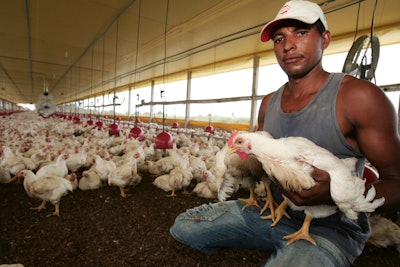
As stated on their website, the International Poultry Welfare Alliance (IPWA) is, “an independent global resource on poultry welfare. IPWA is a diverse and driven group of organizations, companies, and individuals committed to continuously advancing poultry welfare around the world.” They are doing tremendous work in providing science-based best practices and innovation that advances poultry welfare.
Included in the information they share is the IPWA Key Welfare Indicators (KWI) Reference Guides for broilers, layers and turkeys. Originally published in English, they are available in Spanish, and now soon the Portuguese version will be online.
As stated in the guide, the “IPWA KWI Guide is a reference for poultry professionals to measure, monitor, and manage key indicators to drive continuous improvement in welfare outcomes." It is important to state that the guide has no mandatory minimums or maximums, neither ranges. It is a reference to guide the supply chain, from breeders and hatcheries all the way to processing. All the information provided may be adjusted according to goals, national regulations, religious requirements and so on.
Whether you are an animal welfare conscious organization or you need to comply with domestic/international regulations, or customers are requesting it, these guidelines can provide you with a reference for air quality, mortality, litter quality, cull tracking, footpad condition, mobility and leg condition, flock condition, bones and feathers condition, injuries during processing, handling during transportation, ODC and so on.
All KWIs have the same easy-to-read format – reasoning, definitions, observations, measurements and things to improve – with references and cross-references everywhere. However, IPWA emphasizes the fact that it is a “living document.” So, updates and changes/suggestions are expected. It is not written in stone.
From my point of view, I think that the rationale behind using science-based knowledge is what makes these reference guides more accurate and well-thought out. The guides also promote consulting with veterinarians and animal nutritionists, the professionals behind poultry production, among others.
Kudos to IPWA for making these guides available to everybody in Latin America.
What do you think?



















